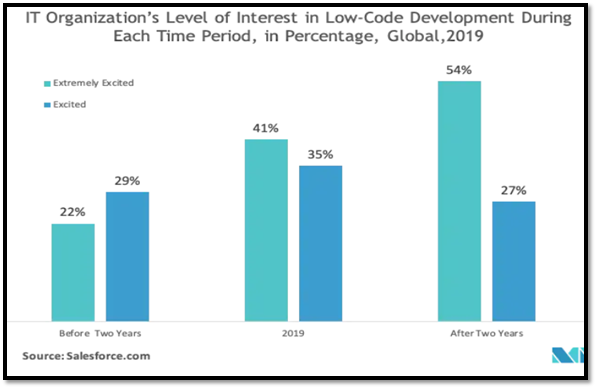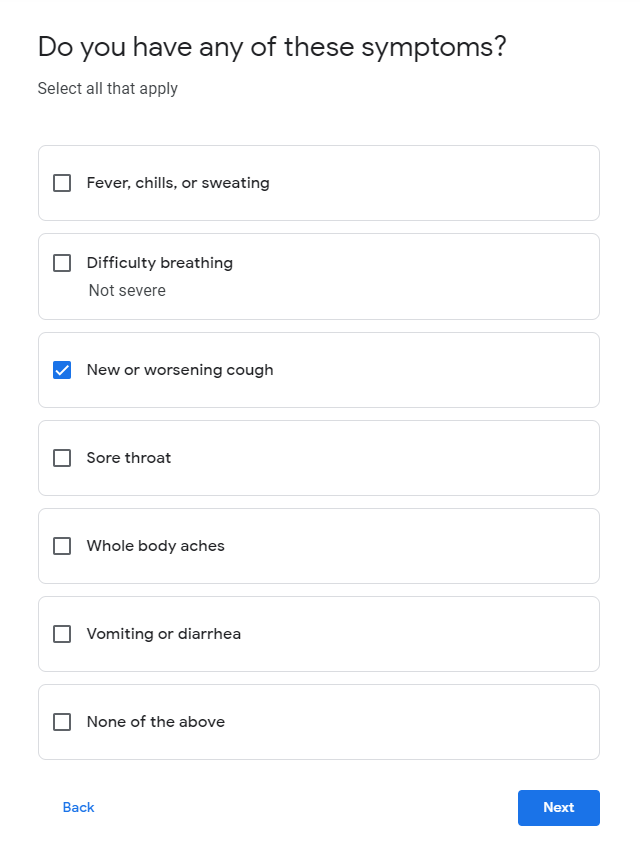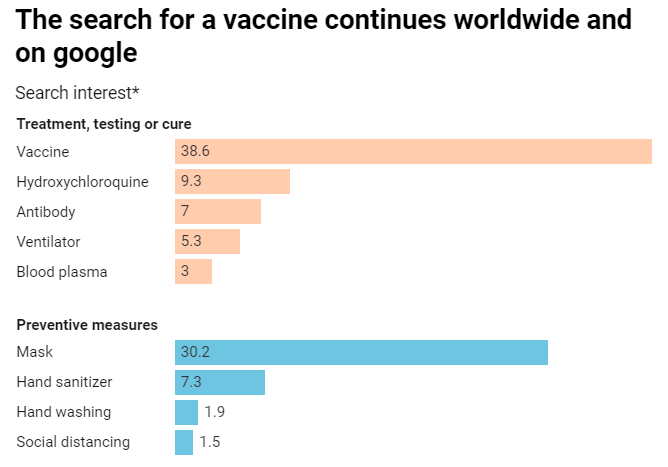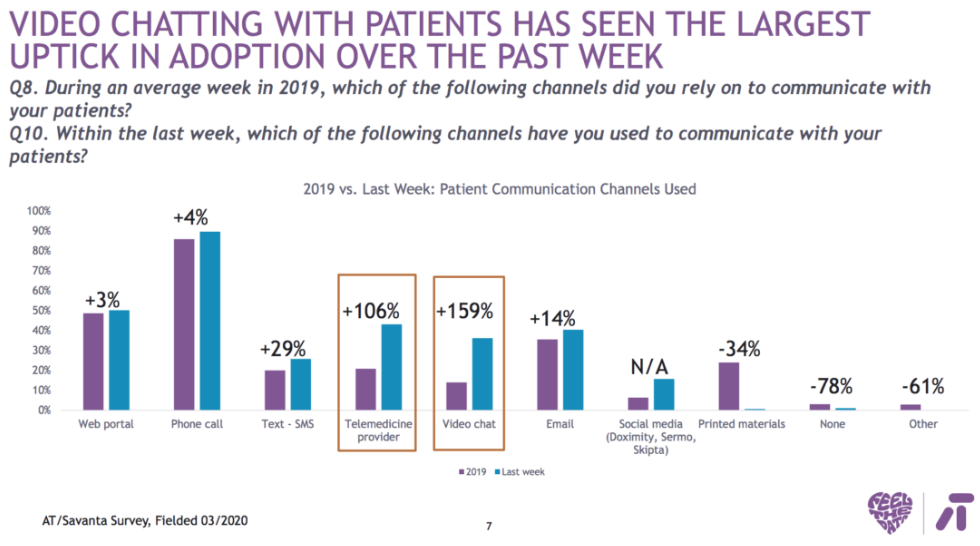Category: Digital Transformation
Digital transformation is the integration of digital technology into all areas of a business, fundamentally changing how one operates and delivers value to customers. With all the service options a customer has nowadays, the relationship a service-provider has with its customers has never been more critical. Businesses must be agile and flexible to meet their evolving demands, and the onus is on these businesses to support those needs and streamline efficiency.
Additionally, a digital transformation strategy helps employees being more engaged. With updated systems, applications, and solutions, it’s easier to communicate with customers, partners, and co-workers, and it leads to better collaboration as well, helping them succeed in driving important business initiatives.

There are many ways that a company can gain benefit by instituting a digital transformation plan, some of which are short-term wins, while others become more obvious down the line. Here are the 6 critical factors that lead to success in Digital Transformation.
- Setting a strategy that covers what, why, and how and defines specific business outcomes
- Winning leadership commitment from CEO through middle management
- Finding the most capable people to drive the program
- Developing an agile governance mindset that is flexible and adaptable.
- Establishing clear metrics for processes and outcomes
- Building modular tech and data platforms driven by business needs

The key to addressing all six factors is planning, preparation, and execution of digital transformation strategy. Once the plan is fixed, then one can determine what it is that one wants to gain from upgrading the digital foothold. Digital Leaders have accomplished an earnings growth 1.8 times* higher than companies that resist Digital Transformation. Organizations that get these 6 elements right have an 80%* chance of success.

Out of the six factors mentioned, two of them are the most critical:
Agility is the key – Organizations need to ensure that all operations adopt an agile approach to work. This means learning continuously, acting as one team, being outcome-oriented, and being committed to action. While making this shift, having an agile mindset is of utmost importance. This requires an authentic belief in the behavioural changes required, as well as supporting tools such as playbooks, processes, and support to work in a cross-functional, mission-oriented way.
Soft skills are as important as tech skills – Another key factor is spending enough time to get the right people in place and then supporting those people. Leaders need to find the best people with the highest potential to lead a successful transformation. A few things to assess when finding a transformation team are:
- Have you taken extra care to fill pivotal roles such as program manager?
- Are there enough digitally literate people to drive new thinking?
- Have you sourced team members tactically from business units so that they can become champions in critical areas?
- Do you have a detailed assessment of the skills required and gaps to be filled?

In addition to tracking progress toward goals, company leaders should track the momentum of the project. Digital Transformation leaders should ask these questions to measure momentum:
- How strong is the business pull for digital solutions versus the program push?
- How do the most talented people in the company feel about joining the program, wary or excited?
- Are executives diverting funding to other initiatives or defending the transformation project?
- Are people trying to lower expectations about the work or talking up the advancements?
These “threshold behaviours” are a good indicator of whether the work is headed in the right direction or stalled out. Success is measured by the percentage of targets met and value created, the percentage of goals met on time, success relative to other transformations, and success relative to management’s aspirations for sustainable change.
InovarTech eliminates the complexity of end-to-end integration with a modern cloud integration platform that connects B2B Data flows, applications, and data across the entire ecosystem and drives complex digital transformation efforts.
References:
*6 ways to win at Digital Transformation from TechRepublic
Over the last few years, the telecom industry has witnessed a heavy decline in revenue in core areas like voice and text messaging along with severe competition from Over-The-Top Service providers. Today the telecom industry is poised to undergo Digital Transformation due to the swift emergence of IoT and 5G. By making the services customer-centric, improving efficiency, and adding high-value margins, they can move away from traditional services. Just as cloud computing has changed the world of data, it is now changing the way the telecom industry operates. Many organizations have started adopting cloud-hosted solutions to streamline data delivery and utilize a single supplier for voice & data services.
Telecom is a people-intensive industry, with a seasoned workforce that includes teams in offices, on trucks, and in retail storefronts. Being forced to work from home due to the ongoing pandemic has impacted their productivity and increased security and infrastructure risks for customers. Technology has transformed almost every sector across the globe and the telecommunications industry is no exception to it.
Here are a few solutions that we feel can cause a dramatic change in the telecom industry:
- 5G Network – The Network of Today and Tomorrow
There are billions of internet users around the globe and most of them prefer smartphones as their primary internet access point. With smartphones now helping users manage important tasks in their lives, consumers look for high capacity networks that promise faster access to applications and richer services. Telecom giants, with the help of various technologists, have already started rolling out their 5G to a multitude of industries such as healthcare, automobile, and education. This expansion of telecom into all sectors by automating processes for online customers is what can bring back the telecom industry to its true potential.

- Managing Big Data
IoT enables telecom companies to acquire an enormous amount of data with the help of various sensors in mobile devices and apps. With the help of tech giants, companies can ensure that their network can move this data efficiently and continue to support new technologies. The data collected helps to generate crucial business insights and understand customer usage patterns which can ultimately be used to improve customer service and evaluate new products to optimize the network.
- Cloud adoption to unlock revenue stream
Most telecom providers rely on a large computing infrastructure to deliver a diverse set of applications, manage data, and bill services. Migrating to the cloud reduces internal computing resource needs as well as internal costs while increasing revenue streams. The pay-per-use service model helps telecoms to introduce new services, reduce the cost of the service, and work more effectively as per the market demands. By adopting cloud technology, telecom industries can switch important business functions to the cloud and benefit from its efficiency.

- Cybersecurity
The telecom sector is one of the most vulnerable sectors when it comes to cybersecurity. With telecom companies having a large customer base, there are abundant opportunities for malicious attacks to gain unauthorized access to their data. The consequences of infrastructure under attack could potentially affect a whole country and its government agencies. Thus, by adopting a holistic approach, telecom providers are able to detect threats, take up prevention measures, and support resilience when attacked.
- Robotic Process Automation (RPA)
The telecom industry has one of the highest adoption rates for RPA technology. It offers high levels of scalability and agility as it takes over the repetitive and rule-based tasks or processes. This enables companies with the right tools to easily manage back-office work such as maintaining data integrity and security, employee salaries, marketing, and advertising, thus giving employees time to work on crucial tasks and develop deeper customer relationships.

- ChatBots to manage customer base
As the telecom industry is now slowly based heavily on technological advances, many are already using AI technology such as virtual assistants, chatbots, and tools to improve customer experience and satisfaction. These solutions provide an unmatched ability to process and analyze an enormous amount of big data that provides valuable insights to improve the quality of service and increase revenue.
The telecommunications industry has been relaying messages between individuals and businesses for over 2 centuries – even during crises. Stress tested for resilience during the past 200 years, this industry is sure to evolve and emerge even more prepared for the decades ahead. There are a lot of new trends in this growing world of the telecom industry, but they all rely on the fundamentals of technology as a niche. By being able to provide reliable technology with a focus on the clients, one may be able to expand exponentially in the future.
In 2020, low code speaks about a movement within technology because, in future, 50%*** of all new business applications will be created with this visual coding tool. If you are not familiar with the term low-code platform for app development, then get ready because you are about to start hearing it everywhere. Global businesses are now creating add-on pressure on developers in demand for multichannel applications to gain competitive advantage. In that scenario, low-code development platforms are accelerating the delivery of business applications with high productivity and offering better customer experience.
The worldwide low-code development platform market generated $10.3 billion revenue in 2019 and is expected to witness a CARG of 31.1% during the forecast period of 2020-2030**. Most of the tech companies consider low-code application platforms because it requires minimal coding and enables faster delivery with the help of pre-packages templates, graphic design techniques, and drag-n-drop tools. Below, three key factors work as driving force in this platform:
- Increasing demand for business digitization
- Less dependency on the information technology
- Stringent government norms on technology adoption

According to the Salesforce.com survey report, over 76%* of IT professionals were profoundly interested in low-code app development, which may scale up to 81% in 2021. More than half of the business is now happening using the low-code programming because developers consider this process viable for the development of the mission-critical application and high-level programming language.

The rapid digital transformation has created a significant impact on major industries like Retail, BFSI, FMGC, E-Commerce, Media, and others. Undergoing process of digitization is a multi-faced journey, and not a single tool or approach will make the transformation to reality. But the bespoke platform can play a central role in the mixed method of digital transformation by reducing the load on IT and accelerating development time than traditional development process. This low-code solution empowers users to build solutions to meet their exact requirements that increase organization agility. This rapid transformation can evaluate the company brand position in this competitive market with a better customer experience.

The ongoing outbreak of COVID-19 is working as an additional fuel on the growth of low-coding platforms. This global pandemic pummels the economy, shredding profits and millions of jobs, now organizations are looking for a new platform to change. In that scenario, low-code automation is helping organizations adapt to massive disruption by quickly combining human and digital labor in the same workflow. COVID-19 has resulted in some of the complex problems mentioned below, for which low-code offers an excellent solution.
- Rapid business transformation in Retail and Healthcare
- Immediate need for applications
- A drastic shift in business strategy models
- Technical debt, and unavailability of talents become burden for companies

This pandemic has forced many small retailers and healthcare organizations to adopt or leverage their online marketing just for survival. Education, Pharma, and other small businesses are now depending on low-code solutions for an immediate need for new software applications. Self-reporting apps on disease symptoms, apps for online classes, government apps for the temporary service are now of outrageous demand. AD&D services in the insurance sector, airlines, retail, and healthcare are in the first row of low-code app demand. Moreover, cost of maintenance and update is quite low in this platform that can reduce company technical debt.
As per the Gartner report, Salesforce, Microsoft, Mendix are the topmost service leaders in fastest-growing low-code environment who have configured the cloud-native deployment options to minimize the operational risk and align organizational needs.

At Inovar, we are fully aware of the benefits of the low-code development platform and have aided one of the biggest healthcare centers in the US. We have helped them to migrate from their existing manual process to a low code solution to help patients amid this global pandemic. It was a comprehensive solution which included, dashboards, online forms where patients can ask any query or find details regarding doctor consultation quickly.
The old way of doing things might not die out completely, but people may be more reliable on low-code platforms as low-code programmers are going to lead the development environment. In a nutshell, in the era of rapid transformation, maybe companies won’t get much time to follow the lengthy development process or reinvent new wheels that can make apps redundant before they are even released. It will be the best time to believe in empowering IT developers and supporting them in creating a whole new ecosystem of application development.
Hence, do not allow yourself to be on the wrong side of history and empower your business with the right trend of the market.
References
* LOW CODE DEVELOPMENT PLATFORM MARKET – GROWTH, TRENDS, FORECASTS (2020-2025), Mordor intelligence, Retrieved from: https://www.mordorintelligence.com/industry-reports/low-code-development-platform-market
** Low-Code Development Platform Market Research Report: By Offering (Solution, Service), Deployment Type (Cloud, On-Premises), Enterprise (Large Enterprises, SME), Vertical (IT, BFSI, Retail, Healthcare, Government, Manufacturing, Media and Entertainment, Education, Energy and Utilities) – Global Industry Analysis and Growth Forecast to 2030, PRESCIENT& STRATEGIC INTELLIGENCE Retrieved from: https://www.psmarketresearch.com/market-analysis/low-code-development-platform-market
How Low-Code Technology Accelerates Digital Transformation Retrieved from:
https://www.businessprocessincubator.com/content/how-low-code-technology-accelerates-digital-transformation/
‘Necessity is the mother of invention’ the old proverb becomes the ultimate truth for global healthcare organizations in the current situation. The front-line healthcare staff has been fighting a war against the dreadful human tragedy due to COVID-19. In these turbulent times, digital technology is reshaping the care delivery system globally.
The healthcare industry was pretty slow in embracing the digital age. But, after the Corona pandemic, healthcare organizations have picked up at an unprecedented pace in the digital transformation journey. Also, more than 50%*** of patients are now ready to adopt digital tools as a way of quick cure solutions. Within six months, some significant variations were observed in medical management, like:
- Doctors and care staffs became more digitally matured in different hospitals
- More confidence & willingness among staff and patients to use technology
- Funding to invest in the medical IT infrastructure
Healthcare leaders have been spellbound by noticing how technology has stepped up to help the affected people in this pandemic. A report reveals a 500%* increase in telehealth visits and remote worker’s number almost double-ups.

Providence Health of Washington State has reconfigured their chatbot ‘Grace’ with FAQ’s and COVID-19 symptoms related assessment. Providence Digital Innovation Group has noticed that 70,000 * patients log into the chatbot and received over one million emails enquiring about the disease symptoms and doctor consultations. The number of virtual visits has gone up by 10 to 15 times compared to the pre-pandemic situation.

Millions of people are now welcoming digital care therapies and open to adopting the virtual health visit. Now, most on-demand digital care services are:
- On-demand medical appointments, home therapies, and care suggestion through telehealth
- Physicians and hospitals are using big-data insights and cloud storage to track and manage patient data
- Medical wearable devices to control health 24/7 and improve preventive measurements
- The virtual collaboration that helps doctors and caregivers to get trained in a better way
- Artificial intelligence that makes personalized treatment possible
- COVID-19 Self-assessment survey designed by healthcare marketers to check the valuable data among the population and initiate quick actions

Considering the present situation, the Government is relaxing healthcare regulations. Since the onset of the pandemic, social distancing has become mandatory for everyone, and that has started an experiment on remote care. The remote treatment makes patients more digitally empowered than ever.

According to the Google database report, from the starting of January to now, the most searched term is “Vaccine,” including the phrase “COVID-19 Vaccine trial and update.” Moreover, the below statistics have revealed a substantial increase in searches of preventive measures in South Asian countries.

Based on these above facts, we have found some astounding impacts on the global healthcare business due to this rapid transformation. An American market research company has already observed a hockey stick curve of the virtual care adoption system in the United States. Besides, US health insurers have admitted covering coronavirus related telemedicine. A French firm Doctolib SAS has experienced an 18-fold jump** on the medical video consultation within March 2020. Over one million people have used NHS 111online support for assessing nCov symptoms within the first week of site launching.

Besides all these benefits, there are some challenges in a digital transformation like:
- Equal opportunity access
- Clinical support to the patient for optimizing technology
- Training to handle new expertise and others
However, healthcare organizations can get rid of these challenges and improve their adoption scale by following the below characteristics.
| Characteristics | Usefulness |
| Easy to use techniques | Patients able to connect through mobile device sensors, useful for video/phone consultation |
| Measurable improvement in patient care quality | Facilitate clinical decision and increase learning on augmented reality |
| Affordable agile solutions and easy to replace the facility | Maintenance cost is low |
| Better working collaboration with industry innovator | Improve communication between end-users and makes clinical training easy |
| Ready to deliver a dynamic solution as per the need of end-users | Quick analysis and better advice to patients |
References:
* Padmanabhan, P (contributor of CIO) ‘How the COVID-19 pandemic is reshaping healthcare with technology’, CIO, India Retrieved from: https://www.cio.com/article/3534499/how-the-covid-19-pandemic-is-reshaping-healthcare-with-technology.html
** Rethinking Digital Transformation of Healthcare Amid COVID-19: How Marketers Can Adapt to Changing Dynamics Retrieved from: https://useinsider.com/healthcare-amid-covid-19/
*** Vikram Kapur and Alex Boulton Covid-19 Accelerates the Adoption of Telemedicine in Asia-Pacific Countries, BAIN & COMPANY, Retrieved from: https://www.bain.com/insights/covid-19-accelerates-the-adoption-of-telemedicine-in-asia-pacific-countries/
CEO Satya Nadella said,” We’ve seen two years’ worth of digital transformation in two months. From remote teamwork and learning, to sales and customer service, to critical cloud infrastructure and security—we are working alongside customers every day to help them adapt and stay open for business in a world of remote everything.”
In this pandemic, there is no choice for anyone but to be tech-savvy. Most businesses that were not dependent on technology, have now been forced into adopting technology. This has forced a shift in remote-work policies and workplace hygiene as well as evolved in business-continuity strategies. The one silver lining to this situation is that industries will now understand how smart-technology platforms and digital-transformation tools can help make fool proof business models in the face of such a global crisis.
The impact that technology is having on the society will persist for years to come. The top digital revolutions are work from home, distance education, telehealth, online entertainment leading to reduced bandwidth and retail industry. Here is our perspective on how some of the industries have changed recently.
RETAIL INDUSTRY:
Retailers are now focusing on launching online stores and developing a well-mapped customer journey across various e-commerce websites. Survival of the retail industry calls for its ability to sell, which involves checking the existing business process to find problems and creating a more robust framework. This will improve efficiency and help converge evolving technologies. Thus, improving customer experience.

HEALTH CARE INDUSTRY:
In the health care sector, non-urgent cases are being dealt with using telemedicine as most governments are now insisting on being technology-enabled. Nowadays, patients get better treatment with virtual reality tools, wearable medical devices and mobile technology. Hospitals are using big data to create a customer persona which compiles statistical information on what the prospective patients want and need, and the platforms where one can reach them. Even doctors can now streamline their workflows using artificial intelligence-powered systems.

FINANCIAL INSTITUTIONS:
Most banks still have not adopted cloud-based infrastructure due to security concerns, but this pandemic has driven them to make this their top priority to become resilient. Banks being digitized can see reduced costs and streamlined processes and this end-to-end integration provides a seamless, engaging customer experience. This makes room for further business transformation with new digital technologies like blockchain and artificial intelligence.
Being primarily powered by AI and its related technologies of machine learning and predictive analytics, insurance operations have become faster. Digital transformation is also speeding up customer service, where live chat and digital assistants are helping customers in their most important times of need.
EDUCATION INDUSTRY:
Digital transformation has impacted the education industry and educators are now realising the benefits of technology in classrooms. Education is an industry with antiquated methods and practices, but with the help of digital transformation, teachers have begun making drastic changes to their instructions and assessments at a much faster and smoother rate than expected. New educational technology is helping students learn in a collaborative and interactive manner. Virtual and augmented reality plays a major role in enhancing teachers’ instructions while simultaneously creating lessons that are fun and engaging for students. Thus, teachers are being able to bring the outside world into the classroom.

Today’s pervasive online environment allows exciting possibilities that can educate students on cyber safety as well as individual responsibility. Colleges and universities are starting to create informal campus learning spaces for the students to understand the importance of collaborating and creating whenever possible and not just within classrooms. Artificial intelligence has also become a major tool in higher education. Australia’s Deaken University used IBM Watson to create a virtual student advisory service available every day of the year. In the very first trimester, over 30,000 questions were recorded. Thus, giving actual advisors time to spend on much advanced problems.
GOVERNMENT AGENCIES:
Infrastructure modernisation has become a priority for governments looking to serve citizens in the digital era. Local, state as well as federal government agencies are undergoing digital transformation to help them use the power of the cloud. While, technology can help governments become more effective, the change does not happen overnight. Due to various factors, different government agencies are at various stages of digital transformation and are looking at how they can scale their efforts to fulfil the commitments made to their constituencies.
Executives of various industries are now inspired to use digital advances such as analytics, mobility, and social media to transform businesses. Customer interactions and internal business processes are changing to take over new technological capabilities. Governance is a key determinant in managing digital transformation as it often goes beyond organisational structures to include specific leaders. These new roles include ‘digital czars’ who lead digital transformation at the firm or business level as well as senior liaison roles.

To conclude, in each of the above-mentioned scenarios, the thing in common is to transform organisations into smarter, more proactive, and more energetic entities that are able to cope up with the changes in our behaviour and technology demands. Taking the right steps can help them evaluate what they need to do to harmonize their back-end systems with new digitized capabilities for clients, partners and staff.
” When digital transformation is done right, it is like a caterpillar turning into a butterfly, but when done wrong, all you have is a really fast caterpillar,” rightly said by George Westerman, MIT Sloan Initiative on the Digital Economy.